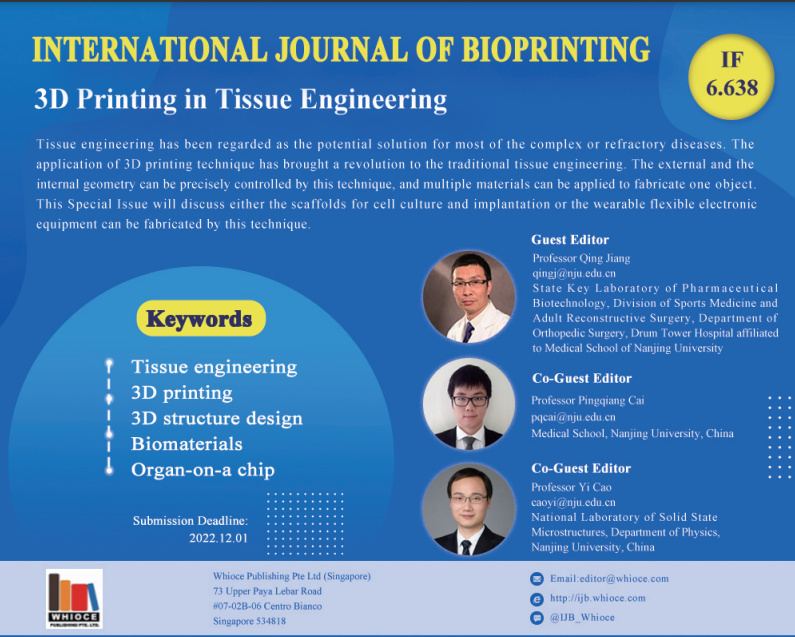
Dear Colleagues
Tissue engineering has been regarded as the potential solution for most of the complex or refractory diseases. The application of 3D printing technique has brought a revolution to the traditional tissue engineering. This Special Issue will discuss either the scaffolds for cell culture and implantation or the wearable flexible electronic equipment can be fabricated by this technique. The external and the internal geometry can be precisely controlled by this technique, and multiple materials can be applied to fabricate one object. Constructing an organ containing natural components and structures in vitro become reality, repairing the injures in situ through a 3D printing robot is no longer science fiction. Benefit from 3D printing, the application mode for tissue engineering techniques is totally changed, and lots of novel directions need to be explored.
Osteoconductivity of bone substitutes with filament-based microarchitectures: Influence of directionality, filament dimension, and distance
Engineering bio-inks for 3D bioprinting cell mechanical microenvironment
Application of 3D-bioprinted nanocellulose and cellulose derivative-based bio-inks in bone and cartilage tissue engineering
Performance of hybrid gelatin-PVA bioinks integrated with genipin through extrusionbased 3D bioprinting: An in vitro evaluation using human dermal fibroblasts
Melt electrowriting-printed peritoneal scaffold prevents peritoneal adhesion and facilitates peritoneal repair
3D printing of biomaterials for vascularized and innervated tissue regeneration
Selective Laser Melted Rare Earth Magnesium Alloy with High Corrosion Resistance
Bioprinting of a Hepatic Tissue Model Using HumanInduced Pluripotent Stem Cell-derived Hepatocytes for Drug-Induced Hepatotoxicity Evaluation
Ovary-derived Decellularized Extracellular Matrix-based Bioink for Fabricating 3D Primary Ovarian Cells-laden Structures for Mouse Ovarian Failure Correction




